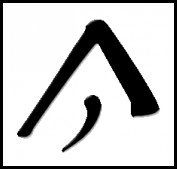Pearl Duncan traces 400 years of ancestry using DNA
By Leigh E. Rich
“My mother’s ancestors used to own my father’s ancestors,” joked author and educator Pearl Duncan Thursday when she spoke at the Auraria campus as part of the Metro and CU-Denver combined Distinguished Lecture Series.
Duncan, whose decade-long research into her family tree is the tale of an upcoming book and a documentary, spoke about tracing her ancestry back nearly 400 years and across three continents using DNA, historical records, and what she calls a “rich folk history.”
Despite using her father’s DNA to confirm his connection to the Opare farmers from the Akuapim Hills of Ghana, Duncan relied more on remnants of surviving linguistic culture to begin the search for her roots.
Growing up in New York in an African-American family from Jamaica, Duncan was intrigued by the “strange sounding names and words” her parents often used. Her great-grandmothers, known as “Nunus” and “Mmeme,” called her father “Pari” and nicknamed Duncan “Little Miss Par.” Duncan’s mother was known as “Dockyi” who, Duncan recalls, used to call after her children not to “nyam” their food—eat too fast—or “chaka chaka”—make messy—the living room.
When Duncan decided in the early 1990s to trace her lineage, she interviewed family members to “collect” these words and nicknames and then sought the aid of a linguistic anthropologist from the Smithsonian Institution, who readily explained they came from Twi, the language of the Akan people of Ghana.
Next, with help from researchers with the Human Genome Diversity Project—an international and somewhat controversial effort to document human genetic variation among different groups worldwide—Duncan compared her father’s genetic information from his Y chromosome with the DNA samples of about 30 men from the Akuapim area in Ghana.
“I (started with) a list of words and names … and I used DNA to confirm my father’s ancestry.”
But, as Duncan told the Auraria campus, her story only began here. “The DNA is there to confirm what you have found” or to be of assistance when confronting a dead end, Duncan explained. “It’s being used to confirm the genealogy, but people still need to use the folk culture. Know the history, know the migration. Migration is a major piece of the story in American history.”
In tracing 15 generations of family on her father’s side and 12 generations on her mother’s, Duncan depended on the “funny words” of her youth and other family information as well as historical documents, including the journals of plantation owners, baptismal and marriage records, and ships’ ledgers.
What she found were relatives as far back as the 1660s in Ghana, the 1690s in colonial Jamaica, and the 1720s in Scotland.
In her lecture, Duncan retold the history of her family who lived in Scotts Hall, “a secluded village of rebel Maroon slaves” in Jamaica.
Using baptismal and marriage documents, Duncan was able to follow the births and lives of her colonial ancestors, from their original transport to the Caribbean on slave ships to their continual struggles to maintain their hard-won freedom and land.
“Color is always noted” on these historical papers, Duncan said, demonstrating with overhead copies of documents she has found during her research.
Reminders of such racist practices have not dampened the buoyant Duncan, however. “You flip the switch on the negative information” and use it instead to help reconstruct the history. “It’s time to cut it loose. Let’s just measure the cultural heritage.”
Despite records of plantation owners beating slaves when they resisted Anglicizing their names, Duncan gives more credit to her family’s long-held grasp on cultural customs to unlocking her ancestral history than to the DNA results.
Opening her lecture with James Crawford’s 1954 song “Iko Iko”—popular still today—Duncan explained how, while growing up in New York, “one of the things I became curious about was what the words mean.”
A working song urging the women to fire their pots, Duncan says the New Orleans singer Crawford “must have heard his grandmother singing the song. They must have heard their grandmothers (singing it). I was actually listening to 200 years of history.”
Similar to her family’s enduring use of Twi words and nicknames, Duncan uses the song to explain how the customs of centuries ago and from across the ocean provide links to the past. “The people have a way of using folk history to hold onto their culture. Notice how (the song) is surviving in our American culture and we didn’t even know where it was coming from. This is why it’s important to know our roots. … My mother used to say it’s not all in the books. You need to listen to your folk culture.”
And while as a child she and her siblings pleaded with their parents to refrain from the odd family phrases when friends would visit, “now we understand,” Duncan said. “There is no reason to be ashamed of it. … We didn’t know then. We know now.”
Ever eager to advise others in search of their own familial answers, Duncan assures her audience DNA Dawns Bringing Daylight—the working title of her book chronicling the cultural and genetic search for her past due out next year—is “a very heroic story about the people’s survival. It’s not a book about people suffering. It’s about people surviving. … We are here because our ancestors were strong.
“All around us, people are beginning to use DNA. Keep interviewing, keep looking. (Our ancestry) is waiting for us to discover.”
And as more and more people engage in genealogical pursuits, Duncan believes, “We will have a whole new fabric. All of the cultures are coming together now to build one unified culture.” ![]()
Rich, L. E. (2002, March 6). Author finds past in present: Pearl Duncan traces 400 years of ancestry through linguistic relics, DNA. Advocate, p. 4.

